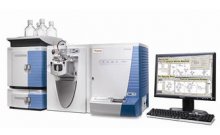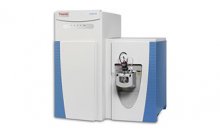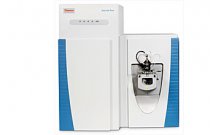改进的QuEChERS方法结合离子阱GCMSn分析生菜中的农残
摘要:
The determination of pesticides in fruits and vegetables has been simplified by a new sample preparation method, QuEChERS (Quick, Easy, Cheap, Effective, Rugged and Safe), published recently as AOAC Method 2007.01.1 The sample preparation is simplified by using a single step buffered acetonitrile (MeCN) extraction and liquid-liquid partitioning from water in the sample by salting out with sodium acetate and magnesium sulfate (MgSO4).1 This technical note describes the application of the QuEChERS sample preparation procedure to analysis by gas chromatography/ tandem mass spectrometry (GC/MSn) on the Thermo Scientific ITQ 700™ GC-ion trap mass spectrometer.
The study was performed to determine the linear ranges, quantitation limits and detection limits for a list of pesticides that are commonly used on iceberg lettuce crops, prepared in matrix using the QuEChERS sample preparation guidelines. A splitless injection was made with detection in EI MS/MS. Since the extracts are prepared in MeCN, a solvent exchange was made to hexane/acetone (9:1) prior to conventional splitless injection.2 Following construction of the calibration curve, multiple matrix spikes were analyzed at a high level of 50 ng/g and a low level spike of 5 ng/g to verify the precision and accuracy of the analytical method.
仪器:
ITQ 700™ GC-ion trap mass spectrometer
结论:
The Thermo Scientific ITQ 700 GC-ion trap MS was thoroughly evaluated and showed excellent accuracy at low concentrations for a number of pesticide residues analyzed in iceberg lettuce. The injector demonstrated low endrin breakdown (< 10%) on a daily basis, proving that the system can analyze active compounds without the need for continual, expensive, and time-consuming maintenance. Calibration curves for the pesticides studied met a linear least squares calibration with a correlation coefficient of R2 > 0.99 for most compounds. The Method Validation Study generated an average % RSD of 9.7% for four replicate analyses at 50 ng/g and a calculated average LOD of 2.7 ng/g in iceberg lettuce was achieved based on 8 replicate analyses of 5 ng/g.




